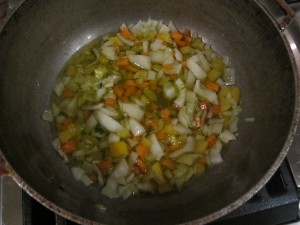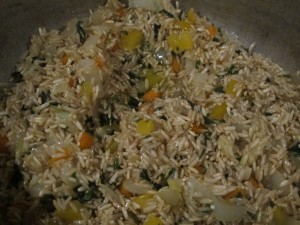
There are certain things we can only learn through our own experiences. Countless times I told my children as toddlers not to touch the stove top because it was hot and they both disregarded my commands and burned the tips of their fingers at least once. I’m an innate caretaker and am always sharing advice with others about my mistakes or from what I’ve learned from other people’s mistakes to admonish them from suffering or failure. Still, I have watched powerless as some people around me ignore my warnings and go ahead and crash into the same wall I told them I had bumped into a few years ago… I guess its human nature. I admit that many times I didn’t follow my parent’s, friend’s or husband’s advice and ended up in trouble. Nevertheless, once we experience pain (sometimes embarrassment and failure), get back on our feet and shake it off, we are supposed to save that information on a “file” in our brain called “COMMON SENSE” so that we take that troublesome event from our past and use it for our benefit as a reference in the future.
For many years, I’ve read about the importance of fiber in our diet in order to have a healthy digestive tract and lower cholesterol, but truly never took any action to improve my fiber intake. Two of my college roommates were always, for lack of a better word, constipated, so I watched as they chowed down fiber cereals everyday as snacks to help them go to the bathroom. I have always been regular, so I didn’t pay much attention to that. I thought eating your daily fiber allowance was just having my salad and some vegetables along with whole wheat bread and fresh fruit. Boy, was I mistaken!
Fiber is the indigestible part of all the plants that we eat- fruit, vegetables, grains and beans- that helps keep us regular. Its a lot more than lettuce and spinach! A diet rich in fiber plays a very important role in gastrointestinal function. Fiber creates a softer, bulkier stool that is easy to pass by absorbing many times their weight in water. It promotes contractions that keep food moving through the intestine. Think of it as a “broom” as it moves though your digestive tract. It is important to drink plenty of water to maximize the benefits of fiber. Soluble fiber absorbs liquid and helps soften stool for a more comfortable elimination. Insoluble fiber adds bulk and contributes to bowel regularity.
On February 2012 on a trip to Miami with my family, I had my first flare of acute diverticulitis, probably as a result of a low fiber diet. No one in my immediate family has suffered from diverticular disease, so this had never been a topic of conversation in my home. You see, it was a Sunday afternoon and we had gone to the theater in Teatro de Bellas Artes in Calle 8 to see a comedy called “Un Balsero en Paris” (super funny!). I began to feel a dull pain in the lower left side of my abdomen which increased gradually. It came to a point when I couldn’t stand up straight. That’s when I told my husband it was time to go to the hospital thinking I had some sort of problem in my ovaries. No fever, no change in my bathroom habits, just a strange feeling in my lower belly.
We arrived at the ER of Doctor’s Hospital in University of Miami at 8pm. By 11:45pm I already had a diagnosis (thankfully my colon had not ruptured or this would have been another story) from my CT scan, blood work and already had an IV with antibiotics. By 3am I had a room, by 7:45am a gastroenterologist was at my bedside (coincidentally he had gone to med school in Bayamón, Puerto Rico!) and by 11am on Monday a licensed nutritionist was explaining to me the differences between a low and high fiber diet, that I should ingest at least 25-35 grams of fiber a day (hard to do with the Western Hemisphere processed foods diet) and what was the path I should take to recover from this episode. Talk about a service oriented hospital!!! The staff, nurses and doctors were amazing!
It was a lot to take in 24 hours. For three days I stayed hospitalized to make sure the infection was going away and to supervise my clear liquid diet to give my large intestine some rest. In the following months I’ve read and read and read about this condition. I previously though that diverticulitis only happened to old people, but as I told people about my incident I was amazed to hear how many suffer from diverticular disease or knows someone who does. It took me over three weeks to recover at home and after two months I could finally have a colonoscopy done (yuppie! not…) which showed my condition was not severe (thankfully). The gastro’s recommendation was to continue with my life consuming a high fiber diet.
So please, do me a great favor, and listen to my advice in order for you to decrease your chances of going through this painful experience. It can happen to anyone…EAT MORE FIBER!
Click here for more information on high fiber foods: Mayo Clinic’s guide to High Fiber Foods
Some tips to help you make better high fiber food choices:
1. Always prefer fresh over processed foods.
2. Take a look at the nutritional information in packaged products. Anything with a fiber content lower than 3 grams is low fiber.
3. Take fiber supplements. I like Benefiber pomegranate juice powder. Also, there are fiber pills.
4. Snack on a high fiber fruit like a pear with skin.
5. Add some All bran cereal to your favorite cereal in the morning.
6. Exercise to promote regularity in your bowel movements.
7. Drink LOTS of water!!!
8. Talk to your kids about the importance of fiber and take the time to prepare healthy snacks for them. We are creatures of habit.
9. Have at least one dark green salad a day.
10. Remember 1 slice of white bread has the same calories as 1 slice of whole wheat bread. The same with white rice and brown rice, click here for more info. However, their nutritional value and how your body process each one is NOT the same. Read the labels.
Enjoy!
Brown Rice with Veggies
Ingredients
3-4 tbsp olive oil
1/2 cup of onion, finely chopped
2 cloves of garlic, minced
1/4 cup of red or yellow bell pepper
1/4 cup of finely chopped carrots
parsley
1 tbsp salt
3 cups long grain brown rice
5 1/2 cups warm or hot water
Procedure


1. In a medium sized heavy bottom pan, chefs pan or caldero, heat olive oil (med). Add onions, carrots, peppers, garlic and parsley and sauté in medium heat for a few minutes until fragrant and soft.

2. Add rice and sauté for a couple of minutes. Then add warm water and stir. Cook in medium heat until all water is evaporated. Stir with a slotted spoon, bring heat to low and cover. Some people place a paper towel when placing the lid to absorb moisture. Cooking brown rice takes longer than white rice. It usually takes me about an hour to reach desired bite and consistency. The next day it tastes even better! Feeds 6-8 persons.
Tip: If you wish to add more liquid to cook for a longer period, place an ice cube in the middle, cover and raise temperature a bit to create steam. Then bring back to low to keep cooking until fully cooked.










Thanks for sharing, glad you’re better…I like to add chopped veggies during the last few minutes of cooking, to help retain the most nutrients from the veggies with brown rice or whole wheat pasta.
that’s a great tip samcyn! thanks